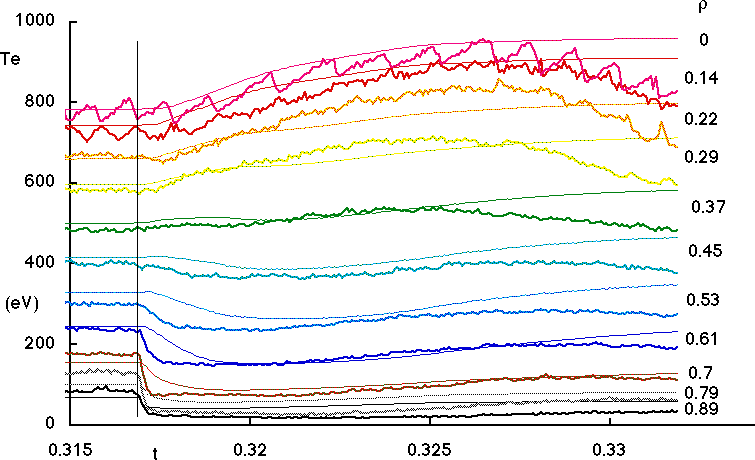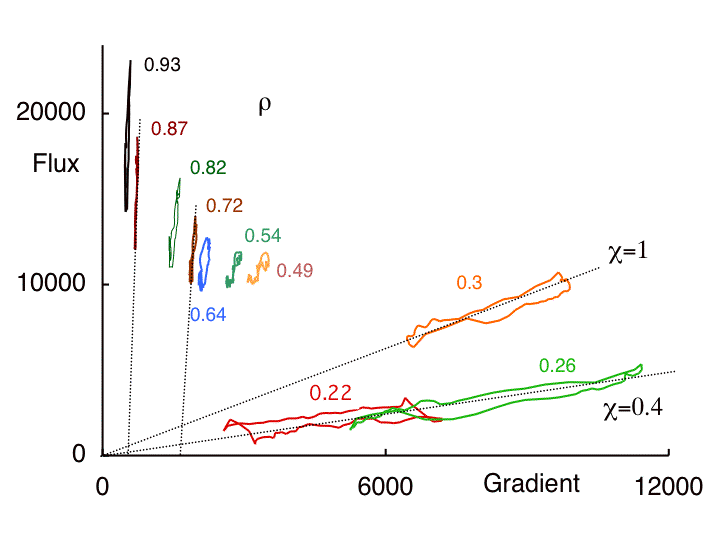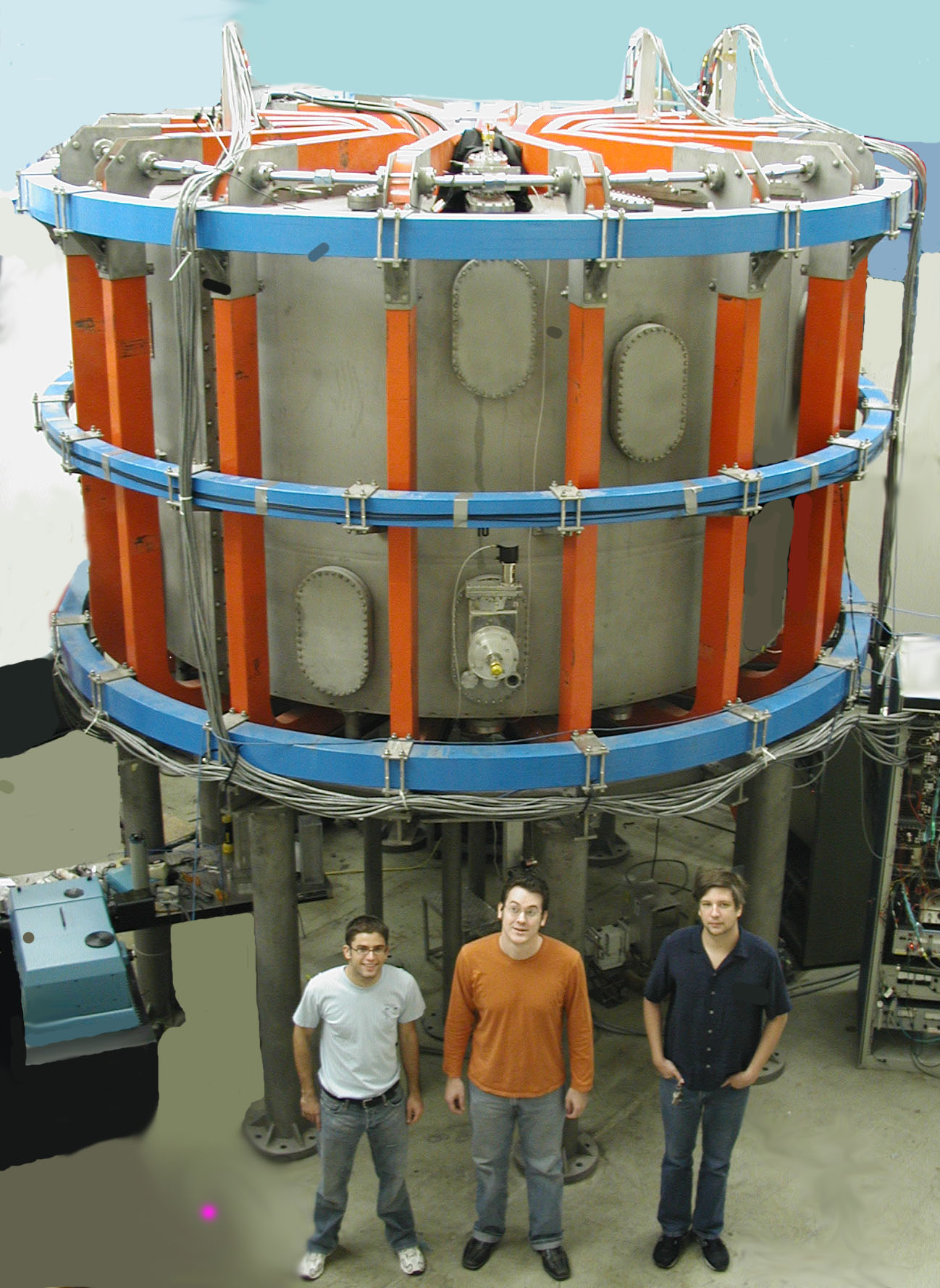

Another example of peculiarity in the
electron channel is the "cold pulse", in which rapid cooling of
the edge can produce a cooling transient that disappears as it
moves toward the core and then inverts to cause
temperature increases in the core. This cannot happen with
any sort of simple diffusion equation.

However, it is possible with suitably coupled diffusion
equations. The smooth, fine lines in the plot are from a
model of coupled electrons and ions in a nonlinear critical
gradient model. Both electron and ion transport are
sensitive to the electron-ion themperature ratio and carefully
adjusted to match the experiment. The outstanding question is
whether such a coupling is consistent with other aspects of
electron and ion energy transport.
I am also conducting experiments on a device here, the Helimak.
This is a model system for study of turbulence in a
magnetized plasma. It offers a simple geometry, essentially
one-dimensional, but one in which the generic turbulence of hot
magnetized plasmas occurs in a controlled fashion. The
operating parameters are chosen to facilitate detailed turbulence
measurements. The device permits control and variation of
many of the key parameters of the theory, including magnetic
curvature, magnetic shear, and flow shear. For example, recent experiments have shown
the applying radial bias of sufficient magnitude can stabilize the
turbulence. The operating parameters can also be
chosen to model the scrape-off layer of confinement devices.
For example, recent experiments have shown
the applying radial bias of sufficient magnitude can stabilize the
turbulence. The operating parameters can also be
chosen to model the scrape-off layer of confinement devices.
Plasmas with comparatively
low density and temperature are often used to model phenomena in
fusion-grade plasmas under conditions that can be more thoroughly
measured. The Helimak is unique among these for its size,
which is important because the machine and plasma are large
compared with the scale size of the plasma -- n/(dn/dr) -- and
turbulence. The turbulence is therefor not dominated or
strongly constrained by the boundaries. The origins and
beginning of the project are described in the Helimak Presentation in pdf.
The Texas Helimak is a technical
paper describing the device, and the Bias
Experiment is described in another paper. A selection
of presentations at meetings includes TTF2012,
DDP2012, and TTF2013.
There is also a brief Movie
of the device and a plasma discharge.